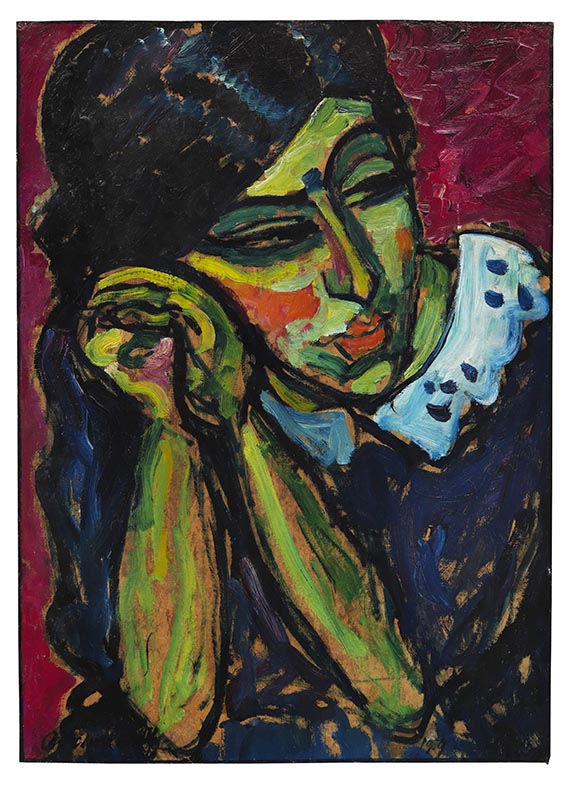Dictionary


Mexican Muralism
Taking its name from the Spanish word for wall "muro", Muralismo refers to paintings on exterior or interior walls of largely public buildings.
Muralismo was particularly important in Mexico, where it primarily manifested itself in propagandistic, social-political, and nationally motivated art in the post-revolutionary period from c. 1920. The frequently ideologically influenced motifs in monumental history paintings used revolution or class struggle as their themes. From 1930, the movement broadened, and visual material became more heterogenous. It both glorified national history, and simultaneously heralded the new age and the new people, celebrating their technical and scientific achievements. This is exemplified in Diego Rivera’s (1886-1957) cycle on the National Palace of Mexico (executed c.1929-35). The mural depicts the country’s history, beginning with the country’s pre-Columbian origins, and finishing in the present day.
Alongside Diego Rivera – who was married to the important Mexican painter Frida Kahlo - the main exponents of Mexican Muralismo were José Clemente Orozco (1883-1949) and David Alfaro Siqueiros (1896-1974). Other less central artists included Jean Charlot, Roberto Montenegro and Alfredo Zalce. The Muralismo painters were inspired by diverse sources, including Cubism, Art Nouveau, Expressionism, and Neue Sachlichkeit, as well as traditional Mexican folk art. The murals were characterised by realism, and incorporated an abundance of figures, movement, and activity, as well as a rich palate of both local and expressive colour. David Alfaro Siqueiros frequently undertook photographic studies for the figures in his pictures, which he then incorporated in his paintings. Mexican muralism was widespread in its homeland, as well as the USA until the 1970s.
Taking its name from the Spanish word for wall "muro", Muralismo refers to paintings on exterior or interior walls of largely public buildings.
Muralismo was particularly important in Mexico, where it primarily manifested itself in propagandistic, social-political, and nationally motivated art in the post-revolutionary period from c. 1920. The frequently ideologically influenced motifs in monumental history paintings used revolution or class struggle as their themes. From 1930, the movement broadened, and visual material became more heterogenous. It both glorified national history, and simultaneously heralded the new age and the new people, celebrating their technical and scientific achievements. This is exemplified in Diego Rivera’s (1886-1957) cycle on the National Palace of Mexico (executed c.1929-35). The mural depicts the country’s history, beginning with the country’s pre-Columbian origins, and finishing in the present day.
Alongside Diego Rivera – who was married to the important Mexican painter Frida Kahlo - the main exponents of Mexican Muralismo were José Clemente Orozco (1883-1949) and David Alfaro Siqueiros (1896-1974). Other less central artists included Jean Charlot, Roberto Montenegro and Alfredo Zalce. The Muralismo painters were inspired by diverse sources, including Cubism, Art Nouveau, Expressionism, and Neue Sachlichkeit, as well as traditional Mexican folk art. The murals were characterised by realism, and incorporated an abundance of figures, movement, and activity, as well as a rich palate of both local and expressive colour. David Alfaro Siqueiros frequently undertook photographic studies for the figures in his pictures, which he then incorporated in his paintings. Mexican muralism was widespread in its homeland, as well as the USA until the 1970s.
Offers




